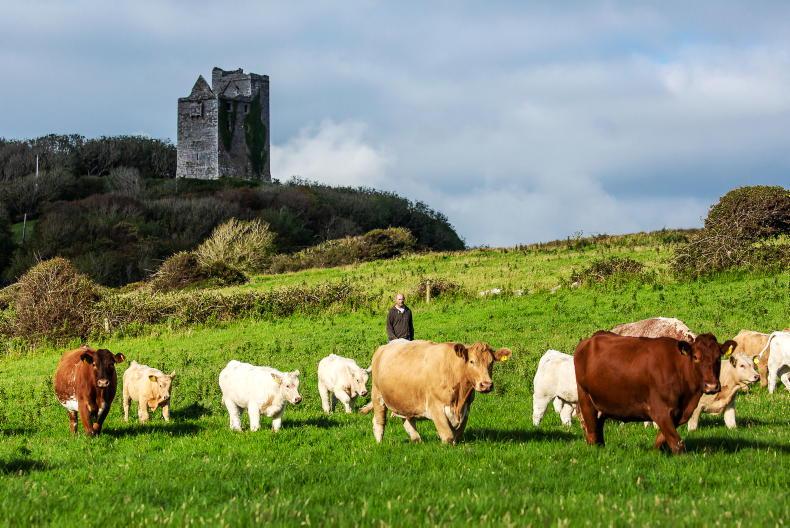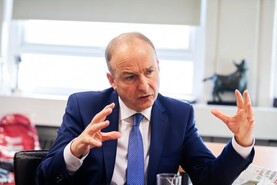A push towards organic farming is being seen in Brussels and at home in Ireland, with a 25% organic farmland target under the Farm to Fork strategy across Europe and an ambitious 840,000ac under the Irish Government’s Ag Climatise report by 2050.
However, how achievable are these targets given that just 177,600ac are currently under organic production in Ireland – just over 2% of overall land use?
Some 1,500 farmers receive organic payments from the Department of Agriculture and more farmers have been keen to join the scheme, with 170 turned away when it reopened briefly in 2019.
Up to 500 places have been promised on the organic scheme when it reopens for entrants in 2020 but even if that number enter with an average farm size of 81.6ac, it will only lead to an additional 40,800ac.
CAP budget
Perhaps as the CAP budget becomes clearer there will be more money set aside for organics to meet these targets but the bigger issue is that the Ag Climatise report says the growth in organics will be consumer-led and that increase in demand from consumers isn’t going to come without a plan and without marketing, which the Government has yet to publish or create alongside its targets.
To date, she has been vocal in outlining her support of the sector
Many eyes will be on Pippa Hackett, Minister of State for Land Use and Biodiversity with the Department of Agriculture, who is herself an organic farmer and Green Party senator.
To date, she has been vocal in outlining her support of the sector, in particular horticulture, but this will need to be backed up with funding if the Green Party is to stand firm on its commitments to the organic sector and its desire to see a reduction in pesticide and fertiliser use.
Challenges
There are other challenges facing the organic sector, with ABP having a share in the two main beef processors, Slaney and Goodherdsman, which kill the bulk of organic cattle, while up to 70% of organic lamb is sold conventionally with no premium price. A lack of research and development into the sector is also a concern.
Teagasc does not have any organic research farms and its head of rural economy and development, Kevin Hanrahan, has highlighted concerns about the sector’s growth.
“I think there are challenges in terms of developing organic,” he said, during the launch of the Sectoral Roadmaps 2027.
To make it resilient, it will need a bigger domestic market
Notably, there was no sector roadmap for the organic sector and Hanrahan mentioned concerns with farmers being able to source organic straw and organic feed to meet organic certificate standards.
“To make it resilient, it will need a bigger domestic market if it is to dramatically increase its market share.”
If the Government wants to meet its 350,000ha target of organic land by 2050, it needs to publish a realistic plan, fast.
Cattle
Most – 1,700 – of Ireland’s organic farmers produce livestock. There are 15,000 cattle processed annually for organic beef. That’s 0.26% of total beef production in the country.
Tillage
There are 161 organic tillage farmers, with almost half of their 2,426ha under oats.
Sheep
Some 600 farmers keep sheep organically, producing 36,772 lambs annually – but as much as 72% of these are sold in conventional markets with no price premium.
Horticulture
Some 250 farmers produce organic fruit and vegetables on 524ha, but they can only meet 30% of the market demand in Ireland, meaning 70% of organic vegetables and fruit are imported.
Dairy
The Irish organic dairy sector is tiny, with just 61 farmers milking 2,912 cows and producing a minuscule 0.11% of total Irish milk production.






 This is a subscriber-only article
This is a subscriber-only article










SHARING OPTIONS: